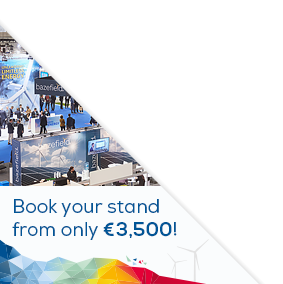Posters
Siblings:
ProceedingsProgrammeProceedingsSpeakersPostersContent PartnersElectrification StageMarkets TheatreR&I ActivitiesStudent DayProgramme Committee & abstracts reviewersPresenters dashboardCome meet the poster presenters to ask them questions and discuss their work
We would like to invite you to come and see the posters at our upcoming conference. The posters will showcase a diverse range of research topics and provide an opportunity for delegates to engage with the authors and learn more about their work. Whether you are a seasoned researcher or simply curious about the latest developments in your field, we believe that the posters will offer something of interest to everyone. So please, join us at the conference and take advantage of this opportunity to learn and engage with your peers in the academic community. We look forward to seeing you there!

PO166: Bandpass Adjusted Turbulence Method Validations- The next step towards LiDAR-Only turbine suitability assessment
Sayantan Chattopadhyay, Lead Siting Solutions Engineer, Vestas
Abstract
The paper aims towards a large scale validation of the novel Bandpass Adjusted Turbulence (BAT) methodology[1] for using measurements from ground-based Wind LiDARs for evaluating turbine suitability assessments through the Mast Equivalent Turbine Load Response, a pivotal step in LiDAR-only turbine suitability assessments, under the current best practices. Through the validations it is revealed that a considerably high-fidelity convergence is achieved in loads computed from met. mast anemometer data and BAT or met. mast equivalent data, by using a Generic BAT model. The research also showed that 10-min avg wind speed and turbulence shows different attributes in Flat sites, as compared to other orographies. This paper showcases the flexibility of the dynamic BAT model by further fine-tuning it to target Flat sites by using a Flat-site-specific BAT model, and in similar process venturing into handling Offshore LiDARs and Floating LiDARs. This research originated from the review of previous researches in the topic, where it was evident that potential methodologies were aiming at correcting wind speed and standard deviation to simply match mast measurements. Having acknowledged the potential of latest LiDAR technologies to accurately estimate the average climatic conditions, the BAT method however aims to fine-tune certain components of the turbulence and its spread, as measured by the LiDAR, to arrive at equivalent turbine loads - as would have been observed with data from a hypothetical met. mast anemometer measurement; in other words, a Met. Mast Equivalent Turbine Load Response. The methodology is dynamic and a frequency-based assessment, where it allows some frequencies to pass through and other frequencies to be transformed or adjusted by the aforementioned pre-defined BAT model. The selection of the frequencies for the bandpass is based on the turbine loads response.







